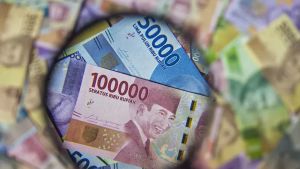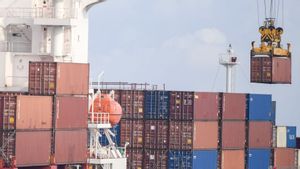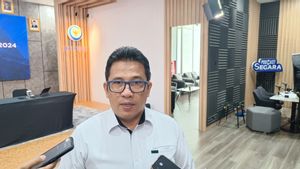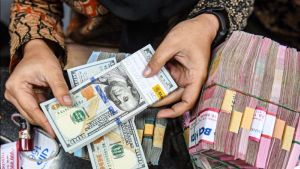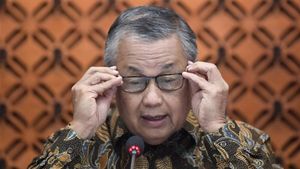JAKARTA - The Institute for Development of Economics and Finance (Indef) assesses that the trend of layoffs (PHK) that hit the textile industry and textile products (TPT) is an alarm of danger.
Head of the Center of Industry, Trade and Investment Indef Andry Stario Nugroho revealed that the number of workers affected by layoffs in Indonesia continued to increase from January to June 2024.
Based on data from the Ministry of Manpower (Kemnaker), there were 32,064 workers who were laid off until the end of June 2024. In fact, this figure increased 21.4 percent from the same period last year which was 26,400 people.
Meanwhile, based on Indef's analysis, continued Andry, the trend of layoffs generally occurs in centers of industrial centers. One of the sectors that is quite large for layoffs is the textile industry and finished clothing.
"Regarding the problem of layoffs, of course, what we think is an alarm of a danger signal. This achievement (the number of layoffs in Indonesia) is quite high compared to the previous year. This is what we see that something is wrong this year," Andry said in a virtual discussion, Thursday, August 8.
Furthermore, Andry said, before the COVID-19 pandemic, the textile and clothing industry in Indonesia continued to experience growth every quarter. However, he continued, now the trend turned lower by contracting 0.88 percent in the second quarter of 2024.
"This is the question, why today the sectors that are strategic and labor-intensive sectors are actually those that are under considerable pressure," he said.
If you look at the 2023 data, continued Andry, the non-oil and gas processing industry contributes 16.8 percent to gross domestic product (GDP) with five industrial sub-sectors contributing 12.3 percent. Where the food and beverage industry contributed 6.5 percent.
Then, continued Andry, the pharmaceutical and traditional medicine industry contributed 1.8 percent. Then, the electronic industry was 1.6 percent. Furthermore, the transportation equipment (otomotive) industry is 1.5 percent; and the textile and clothing industry is 1 percent.
Andry predicts that the contribution of the textile and clothing industry can decrease, and will no longer be included in the five industrial sub-sectors.
SEE ALSO:
"I believe that in 2024, the basic metal industry will follow textiles and clothing as the fifth largest contributor to GDP, and textiles will eventually drop," he explained.
Therefore, Andry hopes that the government can pick up the signals that occur in the textile and finished clothing industry. This includes preparing the right policy to encourage the recovery of this industry.
"Of course we don't want just one ministry to see this as an urgent (important) problem to solve, but also cross government stakeholders," he said.
The English, Chinese, Japanese, Arabic, and French versions are automatically generated by the AI. So there may still be inaccuracies in translating, please always see Indonesian as our main language. (system supported by DigitalSiber.id)




